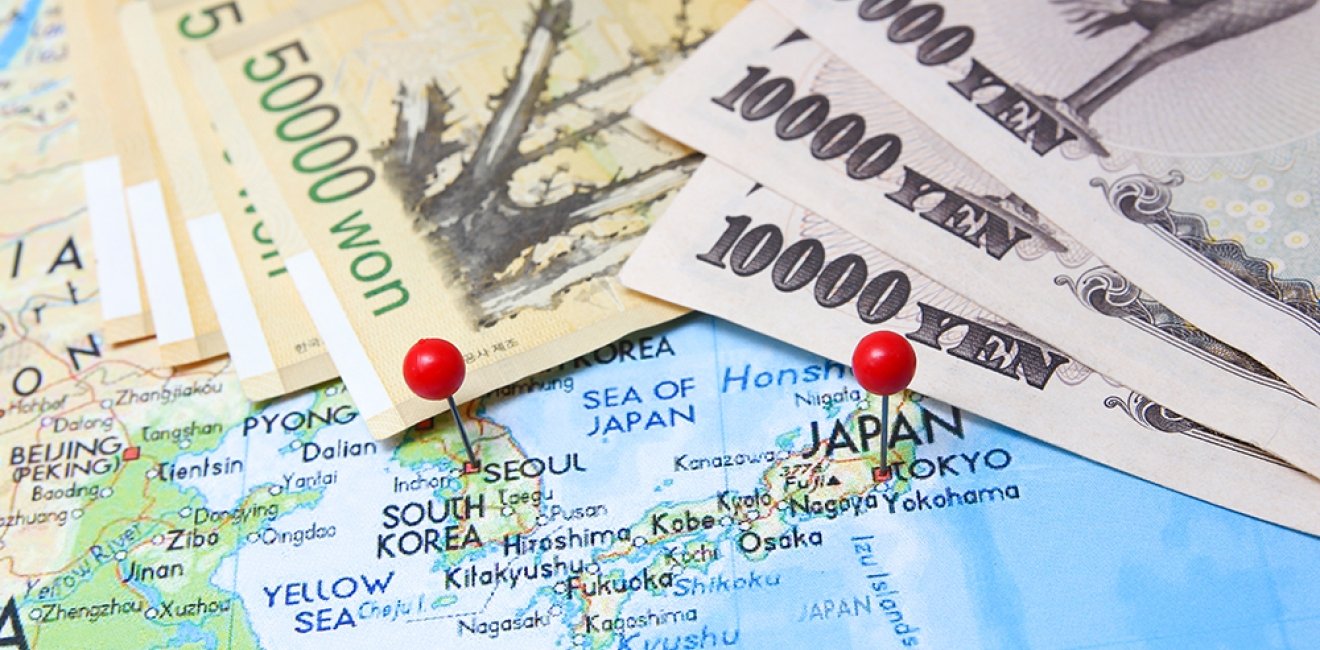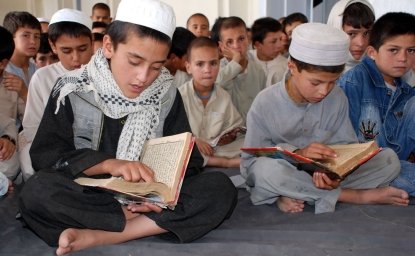
A blog of the Indo-Pacific Program
While the trade war between Washington and Beijing has garnered significant attention, another trade war between two of the world’s largest and most advanced economies is heating up. Japan and South Korea are the world’s third- and twelfth-largest economies, respectively, representing an annual GDP of greater than $6.5 trillion. Yet trade friction between Tokyo and Seoul has intensified as a political standoff, rooted in history and inflamed by domestic politics on both sides, has begun to impact the economies of two critical American allies and global supply chains. Yet while this issue should be of significant interest for the United States, Washington’s role has been far quieter than one would expect.
This dispute is not rooted in complaints about unfair trade practices or strategic competition. Rather, they are rooted in the decades during which Korea was subjugated to a brutal and exploitive colonial rule by Japan that lasted until the end of World War II. It was not until 1965, twenty years after the end of the war, that the two countries were even able to establish diplomatic recognition. At that time, Japan paid $300 million – the equivalent of $2.4 billion in today’s terms, and extended another $200 million in low-interest loans to Korea. The treaty declared that these agreements “settled completely and finally” these historic issues, and were intended to pave the way for improved relations between Tokyo and Seoul.
The first few years of the twenty-first century saw a warming in relations between Seoul and Tokyo. They jointly hosted the 2002 FIFA World Cup, and their popular cultures attracted a new generation of people on both sides who could enjoy K-Pop and Korean movies as well as Japanese anime and video games. In 2015, Japan apologized for the treatment of women who were forced into Japanese military-run brothels and are euphemistically referred to as “comfort women,” and pledged to pay roughly $8 million to the victims. Seoul declared that it would consider the matter resolved “finally and irreversibly” if Japan fulfils its promises, and committed to removing a statue symbolizing comfort women which had been erected by activists outside the Japanese embassy in Seoul in 2011.
Unfortunately, that agreement fell apart and historical animosities have continued to fester. A new government in Seoul ultimately dissolved the foundation that had been established to pay the funds to the surviving comfort women, and the South Korean Foreign Ministry declared the deal to be a political agreement and not legally binding. In 2018, a South Korean court ruled that Korean victims of Japanese colonial rule had not been compensated by Tokyo for their emotional pain and suffering – further undermining the 2015 agreement. Today, the Korean public remains hostile to Japan and suspicious of Tokyo’s intentions. Many officials in Tokyo have grown frustrated with Seoul, believing that there is no gesture Japan could make that would satisfy South Korean demands.
Today, the Korean public remains hostile to Japan and suspicious of Tokyo’s intentions. Many officials in Tokyo have grown frustrated with Seoul, believing that there is no gesture Japan could make that would satisfy South Korean demands.
Recent months have seen a steady escalation in tensions between Japan and South Korea. In October 2018 Japan's Maritime Self-Defense Force skipped an international fleet review in South Korea because it was asked not to fly the "rising sun" flag – a flag those ships are legally required to use, but which some in South Korea view as a symbol of wartime aggression. The South Korean Supreme Court has ordered Nippon Steel and Sumitomo Metal to pay South Koreans who had been forced to work for the company during Japan’s colonial rule over Korea, and approved the seizure of Mitsubishi Heavy trademarks and patents over wartime forced labor.
In late 2018, Japan accused a South Korean destroyer of locking its targeting radar on a Japanese Self-Defense Force (SDF) surveillance plane – a charge Seoul vehemently denied. This incident not only further damaged relations between the two countries, but also damaged a relationship between the SDF and South Korean military that had traditionally been close and a boon to the broader relationship.
Most recently, Tokyo imposed restrictions on materials that are critical to the production of semiconductors and cutting-edge screens – vital components to the high-tech industries that fuel South Korea’s economy. Specifically, Japan is removing South Korea from a so-called “white list” of countries that enjoy preferential treatment on trade. While this decision was officially made because of concerns about South Korean export controls and national security – Japanese press has reported on 156 cases in which “strategic goods” were illegally (or at least without authorization) exported from South to North Korea – it is clear that worsening relations with Seoul is at least in the background of this decision – and may in fact be the driving factor.
As a result of these tensions, Samsung and the company Hynix – which combined represent 60% of the world’s memory-chip making capacity - have reportedly lost billions of dollars in market value in the past month. This also poses significant problems to companies like Apple and other technology companies that have relied on these supply chains to produce their products.
There are two factors driving this animosity anew. The first is domestic politics in South Korea and Japan, which unfortunately drives them apart from one another. Some progressives in South Korea benefit politically by vilifying Japan and stoking historical animosities. Likewise, some politicians in Japan can burnish their nationalist credentials by justifying or calling into question the veracity of Korean claims of abuse.
The second factor is the absence of American leadership on this issue. Tokyo and Seoul ultimately agreed to establish diplomatic relations in 1965 largely because of pressure from Washington, which saw closer ties between South Korea and Japan as necessary to halt Communist aggression from North Korea and China (which had first tested a nuclear weapon just the year previous). Indeed, the 2015 agreement between Japanese Prime Minister Abe Shinzo and then-South Korean President Park Geun-hye came about in part as the result of steady, high-level engagement from President Obama. Yet the Trump administration has not prioritized this relationship to the same degree, thus allowing ties between Tokyo and Seoul to regress.
Worsening relations between Seoul and Tokyo not only damage their own economies; it also has economic and national security costs that reverberate across the region and around the world.
South Korea and Japan are critical allies to the United States, and essential nodes in the high-tech global supply chain that feeds the advanced economies of the world. Worsening relations between Seoul and Tokyo not only damage their own economies; it also has economic and national security costs that reverberate across the region and around the world. It is incumbent that Seoul and Tokyo find a way to restore their bilateral relationship, and it is unlikely they will be able to do so absent significant engagement from Washington. Without it, the stability and prosperity of East Asia could be at greater risk.
Follow Abraham Denmark, director of the Asia Program, on Twitter @AbeDenmark.
The views expressed are the author's alone, and do not represent the views of the U.S. Government or the Wilson Center. Copyright 2019, Asia Program. All rights reserved.
Author


Indo-Pacific Program
The Indo-Pacific Program promotes policy debate and intellectual discussions on US interests in the Asia-Pacific as well as political, economic, security, and social issues relating to the world’s most populous and economically dynamic region. Read more


Hyundai Motor-Korea Foundation Center for Korean History and Public Policy
The Center for Korean History and Public Policy was established in 2015 with the generous support of the Hyundai Motor Company and the Korea Foundation to provide a coherent, long-term platform for improving historical understanding of Korea and informing the public policy debate on the Korean peninsula in the United States and beyond. Read more





